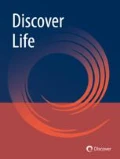In the first number of Origins of Life and Evolution of Biospheres (then Space Life Sciences), its editor Gregg Mamikunian introduced the journal with an editorial entitled “Man and his Creed.” The piece was both an introduction to the field and a call for more open communication (in the time of the cold war) of the medical lessons learned from manned spaceflight to the scientific public. Today, in the 50th anniversary year of the founding of the journal, we face a different challenge. Researchers have embarked on a new mission to explore the nearby regions of the universe in a broadening search for other life and even other intelligence. Thousands of extrasolar planets have been detected and a growing number of these are being viewed as possible abodes of life. This year, NASA’s TESS (Transiting Exoplanet Survey Satellite) will expand the search for exoplanets via a new Earth-orbital instrument for detecting planetary transits. At the time of going to press, NASA was reporting the confirmation of 3791 exoplanets; a number which will continue to explode. Astrobiology, once a science fiction-sounding subject, has become hard science.
Author information
Authors and Affiliations
Corresponding author
Rights and permissions
About this article
Cite this article
Schwartz, A.W. “Man and his Mission”. Orig Life Evol Biosph 48, 273 (2018). https://doi.org/10.1007/s11084-018-9565-6
Published:
Issue Date:
DOI: https://doi.org/10.1007/s11084-018-9565-6

